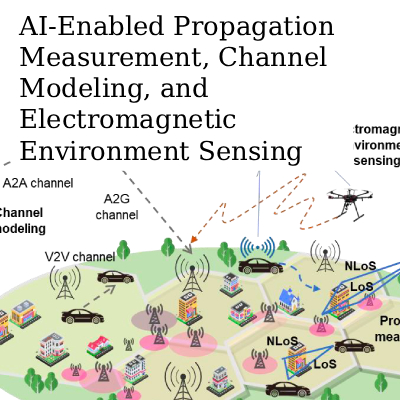Download Call for Papers (PDF)
Submission Deadline: March 31, 2021
 Aims & Scope: Wireless applications are quite often characterized by a large physical distance between the transmitting antennas and the receiver antennas or scatterers, so allowing the valuable application of far-field approximations, far-field characteristic parameters and far-field measurement methods. Nonetheless, there is an increasing number of wireless systems where the far-field condition is not met and specific coupling models and ad-hoc antenna design criteria must be necessarily adopted when the optimization of the whole system performance is mandatory. Among the above mentioned near-field applications, spanning from RF to THz frequencies, some of the many are as follows: wireless power transfer, near- field communications, near-field RFID technology, antenna measurements, material sample characterization and non-destructive sensing, chip-to-chip wireless links, biomedical applications, on-body communications, near-field imaging, etc.
Aims & Scope: Wireless applications are quite often characterized by a large physical distance between the transmitting antennas and the receiver antennas or scatterers, so allowing the valuable application of far-field approximations, far-field characteristic parameters and far-field measurement methods. Nonetheless, there is an increasing number of wireless systems where the far-field condition is not met and specific coupling models and ad-hoc antenna design criteria must be necessarily adopted when the optimization of the whole system performance is mandatory. Among the above mentioned near-field applications, spanning from RF to THz frequencies, some of the many are as follows: wireless power transfer, near- field communications, near-field RFID technology, antenna measurements, material sample characterization and non-destructive sensing, chip-to-chip wireless links, biomedical applications, on-body communications, near-field imaging, etc.
In this context, the scope of this Special Section is to collect contributions related to novel electromagnetic coupling models, modern antennas, array synthesis algorithms, accurate equivalent circuits and effective analysis techniques, which are all specifically developed for high-efficiency near-field wireless links.
Contributions related to operating frequencies that span over a very wide frequency interval, going from a few MHz up to tens of THz, are encouraged. Indeed, one of the objectives is giving evidence to similarities as well as distinctive peculiarities of the methods and devices used at different frequencies for solving a problem, namely the near-field coupling, which could appear as almost the same for any electromagnetic issue and already fully solved through a number of efficient and accurate numerical techniques.
It is also worth noting that near-field coupling issues also appear with relatively large physical distances, if electrically large antenna arrays are used in indoor environments. Finally, at the highest frequencies, antennas that can generate localized waves are gaining increasing interest for their peculiar property of exhibiting neither time nor spatial broadening as they propagate. The precise confinement of the EM energy of localized waves in time and space may benefit applications where resolution is key, as for example medical imaging and nondestructive evaluation.
Papers on models and devices showing how the end-to-end performance of a near-field system can be improved are especially welcome. Priority will be given to those papers dealing with the most advanced and original applications.
Potential topics include but are not limited to the following:
- Technologies for shaping the antenna near field
- Synthesis techniques for antenna array near field
- EM coupling optimization in the antenna near-field region
- Novel antennas for near-field wireless links
- Numerical, analytical and hybrid modeling for near-field coupling
- EM coupling in on-body communications (wearable communications, wireless capsule endoscopic communications)
- New types of MRI coil and arrays
- Near-field measurements for large arrays and reflectors
- Fresnel-zone wireless power transfer
- Near-field RFID
- Near-field dense MIMO communications
- Near-field antenna measurement techniques
- Non-diffractive beams
- Localized waves
- Indoor wave focusing with large arrays
- Statistical properties of the antenna near field
- Large intelligent reflective surfaces for future near-field communications
- Energy considerations for antenna near-field
- Near-field microwave imaging
- Antenna coupling on compact platforms
- On-body antennas and propagation
- Near-field power combining
- Close proximity wireless systems
- Near-field RF imaging systems
Keywords:
- Antenna near-field modeling and synthesis
- Near-field measurements and probes
- Near-field electromagnetic coupling
- Localized waves
- Near-field communications
- Near-field scanning methods and technologies
- Near-field wireless power transfer
Lead Guest Editor
Paolo Nepa
Department of Information Engineering, University of Pisa, Pisa, Italy
Guest Editors
Zhi Ning Chen
Department of Electrical and Computer Engineering, National University of Singapore, Singapore
Ada S. Y. Poon
Department of Electrical Engineering, Stanford University, Stanford, CA, USA
Mauro Ettorre
CNRS University of Rennes 1, France














